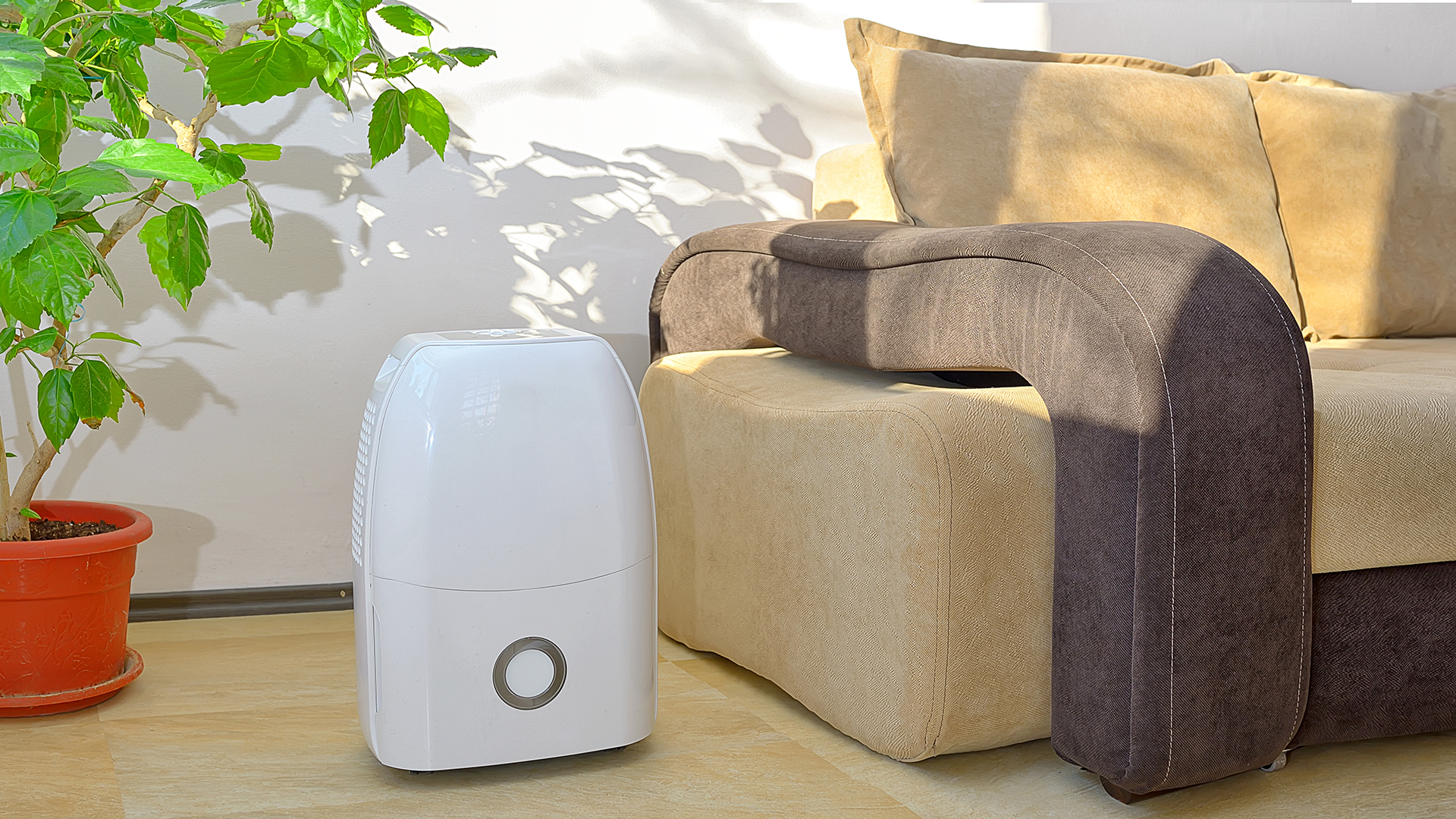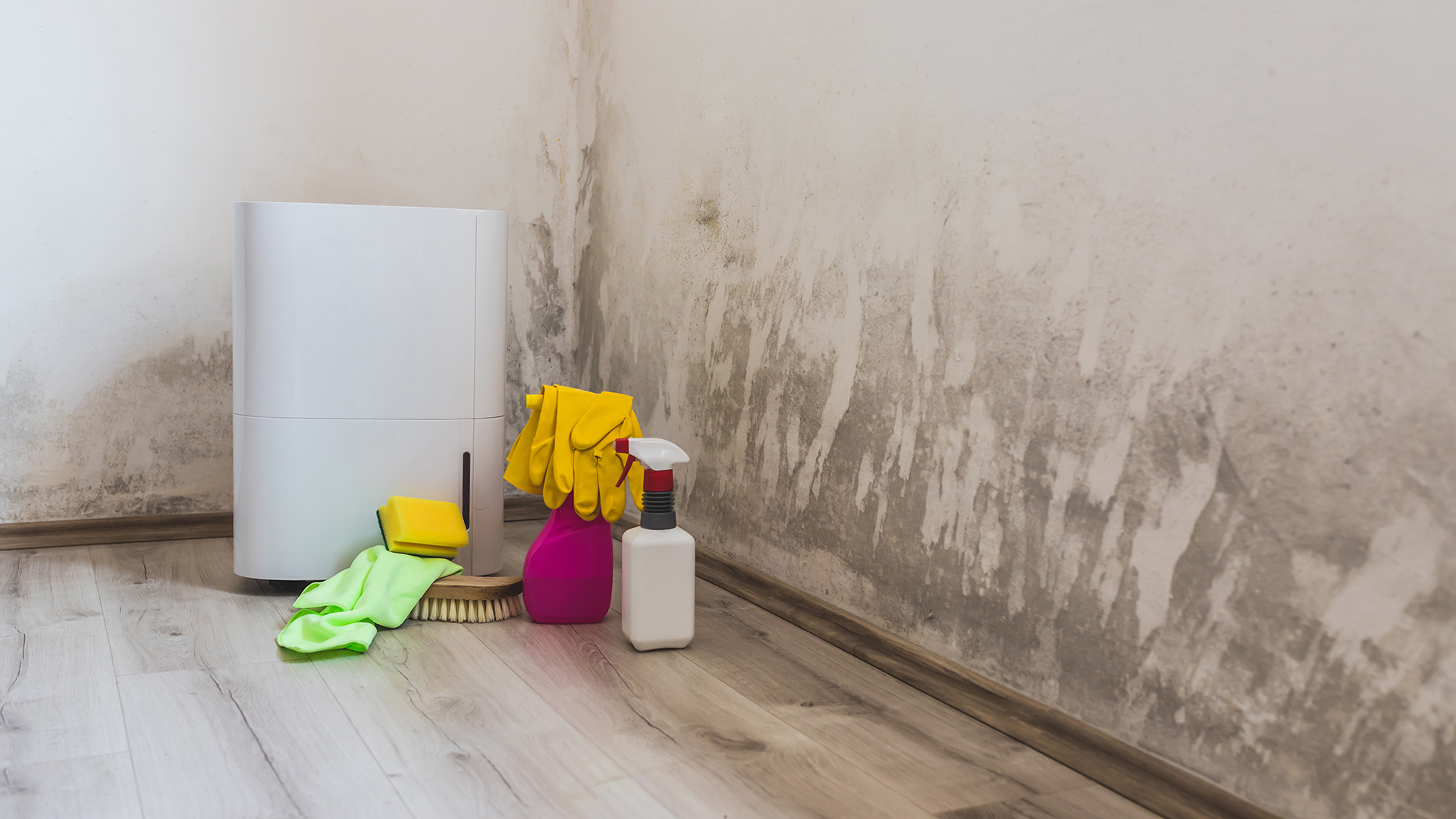Will a dehumidifier in a basement help upstairs?
We answer an all-important question: Will a dehumidifier in a basement help upstairs?

Your basement is likely to be the most humid room in the house. Basements are often poorly insulated and have few, if any, windows, resulting in inadequate ventilation. Consequently, the air in basements often holds larger volumes of water vapor and is more humid. A dehumidifier can remove this moisture and reduce humidity levels, but will a dehumidifier in a basement help upstairs?
Humidity is a measure of water vapor in the air – the more moisture there is, the higher the humidity will be. A comfortable humidity is between 30% and 50% according to the Centers for Disease Control and Prevention (CDC). Anything above this can make the room, or your whole house, feel stuffy. It can also encourage mold, mildew and dust mites.
Related: Best humidifiers
However, humidity isn’t evenly distributed throughout the home: the temperature, height and spacial area of each floor of the home are all factors that play into how humid it is. In fact, what causes dampness in a home can also come from how the room is used: for example, the kitchen and bathrooms, which are periodically subjected to increased moisture, can add to the humidity for a short time.
Your basement is likely to be consistently more humid than upstairs, but there are things you can do if your basement is too humid. A dehumidifier can be a great way to reduce humidity in a basement and prevent basement mold from making you sick.
Will a dehumidifier in a basement help upstairs?
Portable dehumidifiers are popular among homeowners; they’re small, inexpensive and work well at room temperature. Plus, they can also be moved from room to room, which is helpful if several areas in your home suffer from an abundance of humidity.
These small units are often made of plastic and use a fan to draw warm, moisture-laden air across a set of cold evaporator coils. These coils condense the water vapor and that water is collected drop by drop in an attached storage tank, or directed straight down the drain.
Get the world’s most fascinating discoveries delivered straight to your inbox.

Portable dehumidifiers are classified by capacity – a measure of how much moisture they can remove in a 24-hour period. Capacity is determined by the size of the area you want to dehumidify, and the conditions – whether it is only slightly damp, or consistently wet, for example.
The US Government’s Energy Star program recommends placing your dehumidifier away from walls to allow air to circulate freely, and away from dust and dirt that could clog the coils as the air is drawn in. It also suggests keeping doors and windows in the space closed during dehumidification to ensure moisture is removed as efficiently as possible.
• Related: Dehumidifiers on sale
Placing a portable dehumidifier in the basement will help to remove mold from a basement and keep humidity below 50%. However, these machines are designed to work in a small area such as a single room. They are too small in capacity and size to efficiently dehumidify larger areas and, because you should keep the room closed off, a dehumidifier in the basement will have little effect on the upstairs. This means you’ll have to move it around or invest in a portable dehumidifier for each room that has a humidity problem.
How does a dehumidifier in a basement help the entire house?
As we’ve just discovered, a portable dehumidifier placed in the basement isn’t up to the job of reducing humidity upstairs, let alone in the whole house. If your entire home is prone to high moisture levels, you may need to invest in a whole-house dehumidifier. These can be installed in the basement and will help dehumidify the upstairs, and the entire house.
Whole-house dehumidifiers are more expensive and much larger than their portable counterparts. They are made of stainless steel or heavy-duty plastic, which makes them more durable, but they can be unsightly so they’re often installed, by a professional, in the basement within an HVAC (heating, ventilation and air conditioning) system.
Whole-house dehumidifiers work in the same way as portable dehumidifiers, but feature a larger compressor and have bigger condensing coils, allowing them to remove more moisture in less time. According to AchooAllergy, whole-house dehumidifiers enable you to automatically control humidity throughout your entire home, and are up to four times more energy efficient than portable dehumidifiers. They’re also quieter, have a longer lifespan, and require little maintenance.
What makes a basement dehumidifier different?
Whether you opt for a whole-house or simple portable dehumidifier, the chances are you’ll be condensing lots of moisture from the air, so it’s important to consider how to remove this from your dehumidifier.
"Basement dehumidifiers are very similar to standard humidifiers, however, due to the potential for high volumes of humidity being removed from the air in the form of water, thought should be put into drainage solutions," advises Edward McFarlane, Strategic Advisor, Provider Experience at HomeX.
You could channel the moisture directly down the drain, or into the laundry or utility sink, or even into a tub to enable you to reuse it. If you haven’t got suitable drainage in the basement, you may need to invest in a dehumidifier with a pump to move the water away from the dehumidifier.
• Read more: How to clean a dehumidifier
Despite being one of the most humid rooms in the house, the temperature in the basement can drop lower than the rest of the house, particularly in the winter months. Your dehumidifier needs to be able to function at temperatures below 65°F, otherwise frost may form on the condensing coils and could cause the compressor to switch on and off repeatedly without actually removing any moisture in the air, according to Energy Star. Some dehumidifiers are designed to work in temperatures as low as 42°F, while others feature an anti-frost sensor to automatically switch the dehumidifier off if the air temperature drops too low.
When purchasing a dehumidifier, you should choose one that meets your needs. A portable dehumidifier in the basement will only help with moisture levels and humidity in the basement; it just isn’t powerful enough to dehumidify the upstairs or the entire house. If moisture is a constant problem throughout your home, your best bet is to invest in a whole-house dehumidifier that, when installed in the basement, will help keep humidity at bay in the entire home.
Kerry is a freelance writer and editor, specializing in science and health-related topics. Her work has appeared in many scientific and medical magazines and websites, including Forward, Patient, NetDoctor, YourWeather, the AZO portfolio, and NS Media titles.
Kerry’s articles cover a wide range of topics including astronomy, nanotechnology, physics, medical devices, pharmaceuticals and mental health, but she has a particular interest in environmental science, cleantech and climate change.
Kerry is NCTJ trained, and has a degree Natural Sciences from the University of Bath where she studied a range of topics, including chemistry, biology, and environmental sciences.



